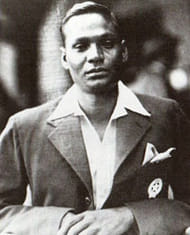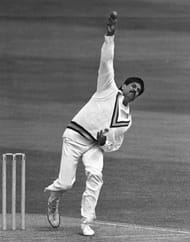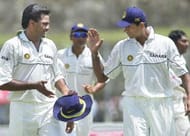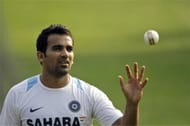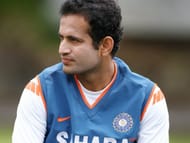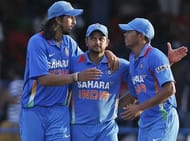The genuine feature of any Indian team for many years has been the lack of a fast bowler, who could crank up a pace above 140kmph consistently. Traditionally, the Indian squad has been a spin bastion, producing greats such as Erapalli Prassanna, Bishen Singh Bedi, Bhagwat Chandrasekhar, Srinivas Venkatraghavan, Anil Kumble, Harbhajan Singh and the like.
But, there were a few fast bowlers who broke the norm and produced some marvelous spells of fast bowling, like Kapil Dev, Chetan Sharma, Manoj Prabhakar, Javagal Srinath, Venkatesh Prasad and more recently, Zaheer Khan too has stepped up to a level where he can be compared with the aforementioned list of greats.
So, what really could be the reason for fast bowlers not coming through and being good enough to make it into the playing eleven? One of the major reasons given is the type of wickets produced in India (and to a certain extent the Indian Subcontinent). In the early days, Indian wickets were typically called “Dust bowls”, which implies that the wicket is dry, doesn’t have any grass and as a result crumbles, thus producing the “Dust Bowl”. Another, reason for the dearth of fast bowlers is the lack of inspiration, the limited number of fast bowlers who can be looked up to by an aspiring young fast bowler as an idol.
But in the history of Indian cricket, there have been some good fast bowlers like Mohammad Nissar who was on India’s first tour of England, in 1932 and happens to be the fastest pre-war bowler India has produced. In the tour of England, Nissar in his first ball of the second over, dismissed Herbert Sutcliffe for 3, then in the fifth ball of the very same over, he bowled the other opener, Percy Holmes. What made this interesting was that Holmes and Sutcliffe were involved in an opening stand of 555 for Yorkshire just ten days ago. His career strike rate of 48 from just 6 tests speaks volumes about him.
Amar Singh, who partnered Mohammad Nissar on India’s first tour of England, in 1932 were lethal together. So much so that in Wisden’s report of the test, it was noted that, “Amar Singh bowled almost as well, making the ball curl in the air either from leg or from the off and causing it to come off the pitch at a tremendous pace.” Walter Hammond chose to be more poetic, saying Amar Singh “came off the pitch like the crack of doom”.
There was a lull in the Indian fast bowling scene for quite a while. The next fast bowler to make an impact would be the 1983 World Cup winning captain, Kapil Dev. As an added bonus he was an all-rounder who could Bat well too. In his test career spanning from 1978-1994, he played a total of 131 matches taking 434 scalps (a feat no other Indian fast bowler has come close to). An important feature was that he carried the bowling attack on his shoulders on the back of retirements of some of India’s great spinners.
Again there was a period where India again lacked quality fast bowlers until the likes of Javagal Srinath and Venkatesh Prasad burst on to the scene. Javagal Srinath was the second Indian pace bowler after Kapil Dev to take 200 Test wickets. During India’s tour of South Africa in 1996, he clocked a speed of 156 km/h (97 mph) and he also clocked 93mph at the 1999 World Cup. He is the leading wicket taker for India in the World Cups (1992, 1996, 1999 & 2003) with 44 wickets. Venkatesh Prasad could not emulate the success of Srinath, but these two combined were a potent force, which has won India many matches.
Coming to the modern era, Zaheer Khan has been the only bowler who has played over 78 test matches and has scalped over 271 wickets and comes second best to Kapil Dev, albeit only in terms of the number of matches played and wickets taken. He is the only fast bowler who has found success after the retirement of Srinath.
However, India has not been able to find a bowler who can replace Zaheer. Yes, Zaheer is still raring to go, but age is not on his side and can at best continue for one or two years. Irfan Pathan was the man for the job when he made his sensational debut in the Border Gavaskar trophy in Australia. He did carry on for a brief period, but he was pressurized to improve his batting (by promoting him to no.3 in some crucial situations) and had a lot of injuries, after which he was never the same.
In the current scenario, Ishant Sharma is the only bowler who comes close to spear heading the Indian fast bowling attack, but is consistently plagued with injuries and poor form. If one looks beyond Ishant, we can find Umesh Yadav, who shows a lot of promise but again fitness has been a concern. To make an impact, a fast bowler must play as many matches as possible, for this, he needs to be fit. One of the primary concerns of fast bowlers is that they often get injured. Sometimes, they rush their comebacks without full recovery and rehabilitation. This leads to further injuries which can be detrimental to the career of a fast bowler. Also some fast bowlers change their game plan after coming back from injuries, like Munaf Patel, who was bowling consistently in the 140kmph range, but reduced his pace to 125 – 130kmph so that he could avoid injuries and be consistent with his line and length.
This also forces us to think whether we need to have a mentor for young bowlers, preferably a retired fast bowler with international experience. But didn’t Dennis Lillee work with the MRF pace foundation for nurturing fast bowlers from a young age? The MRF Pace Foundation has produced fast bowlers like Javagal Srinath, Irfan Pathan, Munaf Patel, Venkatesh Prasad, Rudra Pratap Singh, Zaheer Khan and Shanthakumaran Sreesanth. Among these, Irfan Pathan, Munaf Patel and Rudra Pratap Singh did wonderfully well when they first made it to the Indian team and then again, injury, loss of form took away the edge that they had and are struggling to make a comeback to the Indian team.
This suggests that a bowler needs guidance even after having played on the biggest stage. This can be done by establishing fast bowling academies (akin to the NCA) focused exclusively on the group of around 10 fast bowlers who play for India on a regular basis. Camps can be held during the break between series, where they can be coached on how to remain fit, keep the injuries to a minimum and enhance their area of specialty, i.e. a bowler who bowls above 140kmph needs encouragement to push his pace further and add an element of swing to his bowling, a bowler who is good at swinging the ball but with limited pace needs to be encouraged to enhance this ability of his and also to add some tricks in his repertoire so that he can perform even better.
Hope the BCCI takes some immediate actions to stop this dearth of fast bowlers in India.
Follow IPL Auction 2025 Live Updates, News & Biddings at Sportskeeda. Get the fastest updates on Mega-Auction and cricket news
